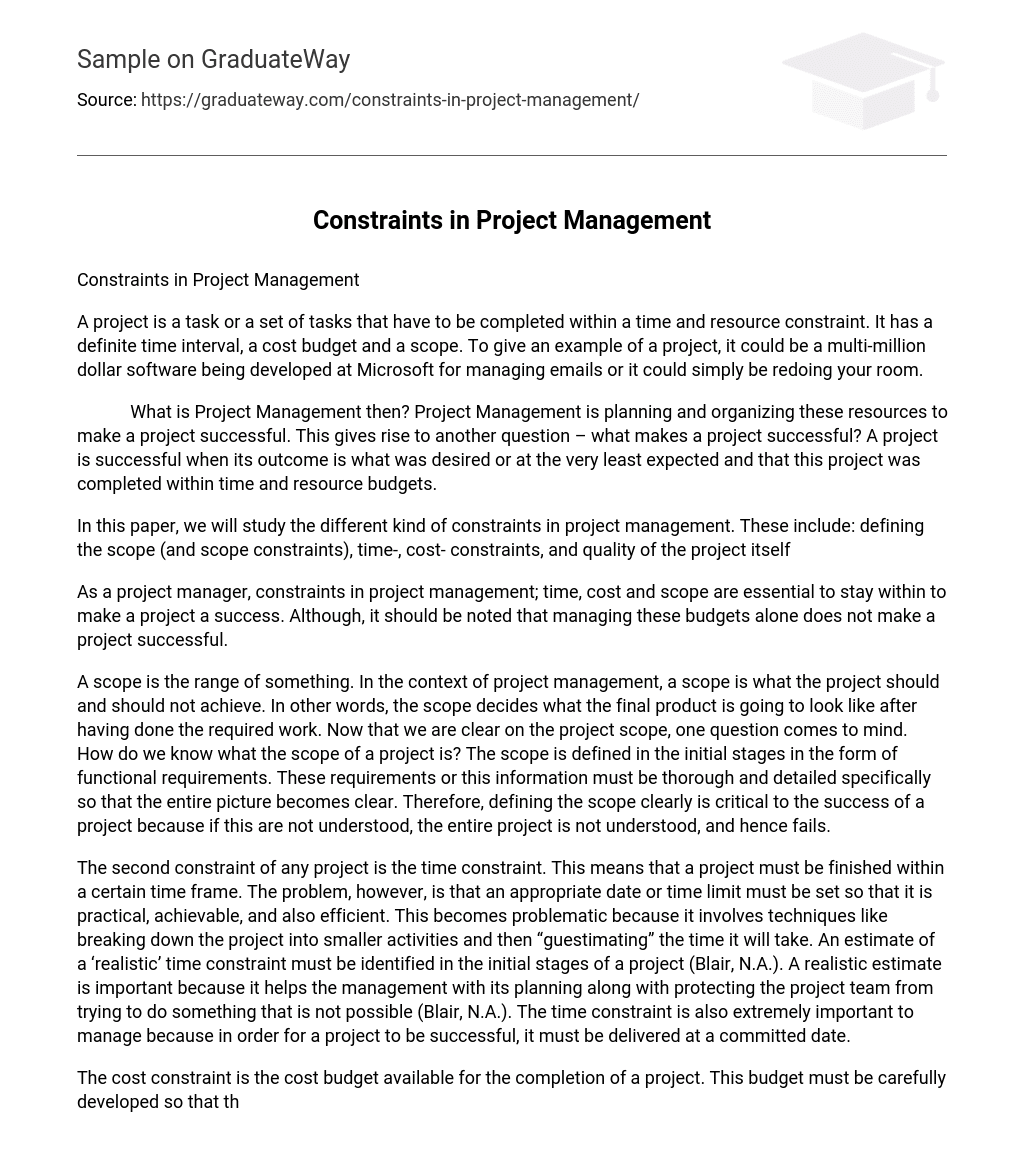A project is a task or a set of tasks that have to be completed within a time and resource constraint. It has a definite time interval, a cost budget and a scope. To give an example of a project, it could be a multi-million dollar software being developed at Microsoft for managing emails or it could simply be redoing your room.
What is Project Management then? Project Management is planning and organizing these resources to make a project successful. This gives rise to another question – what makes a project successful? A project is successful when its outcome is what was desired or at the very least expected and that this project was completed within time and resource budgets.
In this paper, we will study the different kind of constraints in project management. These include: defining the scope (and scope constraints), time-, cost- constraints, and quality of the project itself
As a project manager, constraints in project management; time, cost and scope are essential to stay within to make a project a success. Although, it should be noted that managing these budgets alone does not make a project successful.
A scope is the range of something. In the context of project management, a scope is what the project should and should not achieve. In other words, the scope decides what the final product is going to look like after having done the required work. Now that we are clear on the project scope, one question comes to mind. How do we know what the scope of a project is? The scope is defined in the initial stages in the form of functional requirements. These requirements or this information must be thorough and detailed specifically so that the entire picture becomes clear. Therefore, defining the scope clearly is critical to the success of a project because if this are not understood, the entire project is not understood, and hence fails.
The second constraint of any project is the time constraint. This means that a project must be finished within a certain time frame. The problem, however, is that an appropriate date or time limit must be set so that it is practical, achievable, and also efficient. This becomes problematic because it involves techniques like breaking down the project into smaller activities and then “guestimating” the time it will take. An estimate of a ‘realistic’ time constraint must be identified in the initial stages of a project (Blair, N.A.). A realistic estimate is important because it helps the management with its planning along with protecting the project team from trying to do something that is not possible (Blair, N.A.). The time constraint is also extremely important to manage because in order for a project to be successful, it must be delivered at a committed date.
The cost constraint is the cost budget available for the completion of a project. This budget must be carefully developed so that the project team has sufficient resources to complete the project easily. If there is a budget within which the project team must deliver, they tend to be more careful. Therefore, a budget must be such that allows for innovation but also is sufficient to meet needs.
Finally, quality is a constraint. The quality of a project ultimately depends on the scope of it, and the time and cost budgets. The more the time is allowed, and the more the money is spent, and the more explicitly it is defines, the better quality it will have. This is a challenging because the three constraints-scope, time and cost- are all inversely proportional and that they are competing. This means that changing one of these will have an effect on the other/s. For example, suppose a client wishes to increase the scope of the product or that he requires his product to do more than what was stated earlier. This means that the cost must also be increased along with the time taken to meet the requirements of this new project scope.
In conclusion, I will again stress the importance of understanding all the three constraints for effective management of a project. Understanding these constraints helps you see the boundaries within which you must create a product and that too, a successful one. In fact, this product will only be successful if these constraints are understood and accepted.
References
Blair, G. M. (N.A.) Planning a Project. Retrieved April 13, 2009, from http://www.see.ed.ac.uk/~gerard/Management/art8.html?http://www.ee.ed.ac.uk/~gerard/Management/art8.html
Conley, G. Q. (2008, July 20) Project Management Triangle. Retrieved April 13, 2009, from Intertensity Ltd. http://www.intertensity.com





